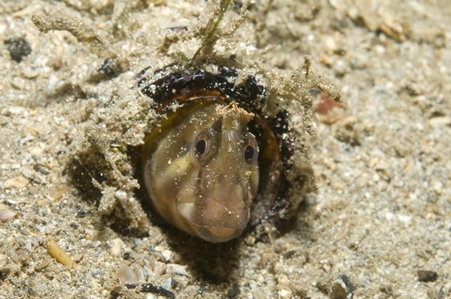General Description
Head and body somewhat compressed, robust anteriorly, tapering towards tail; dorsal fin long-based; long fleshy fringed tentacles above each eye; large individuals with bulbous heads. Pale brownish to bluish grey, covered in very fine spots or stipples. Males with about 6 indistinct darker saddle-like markings above midline of body; females with indistinct saddles, each broken up into a checkerboard pattern. To 13 cm.
Biology
This species is very common in Port Phillip Bay, especially in tide pools and around jetties or pylons. Individuals are also seen poking their heads from small holes and crevices, or even from discarded cans and bottles.
Habitat
Shallow rocky reefs in sheltered bays and estuaries, in depths of 0-10 m.
Reefs
Distribution guide
South-eastern Australia.
Species Group
Depth
Shore (0-1 m)
Shallow (1-30 m)
Water Column
Max Size
13 cm
Diet
Carnivore
Commercial Species
No
Global Dispersal
Native to Australia
Conservation Status
- DSE Advisory List : Not listed
- EPBC Act 1999 : Not listed
- IUCN Red List : Not listed







